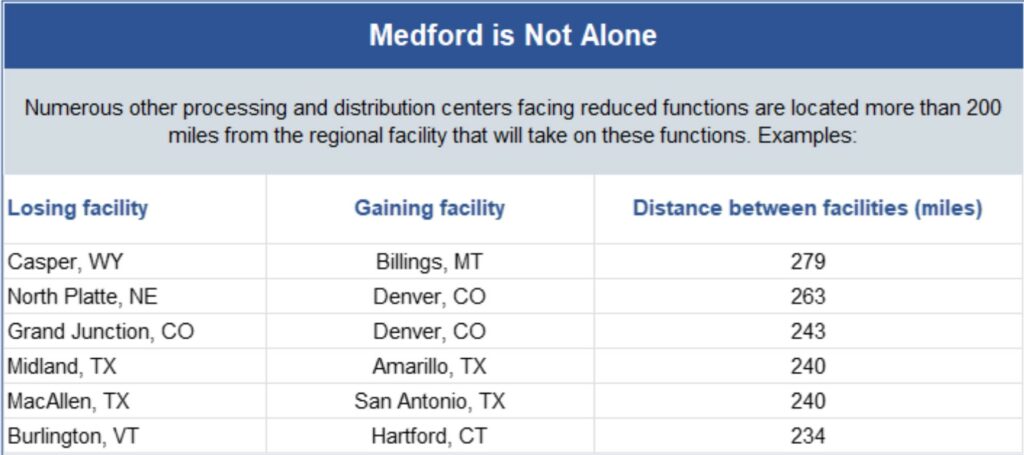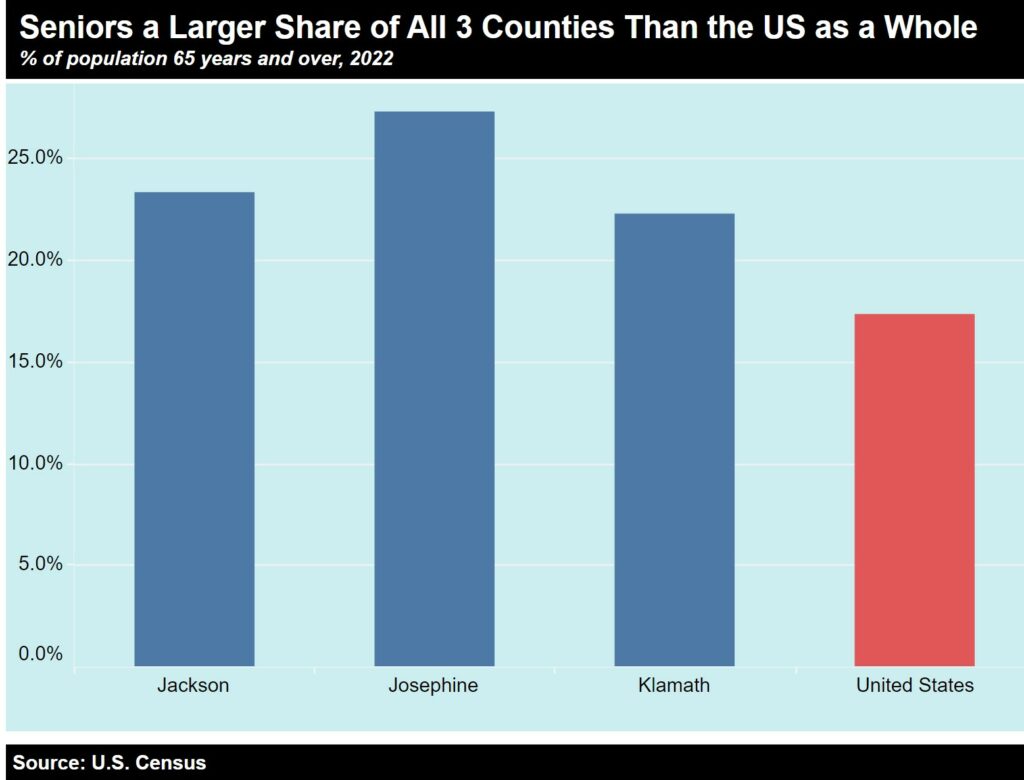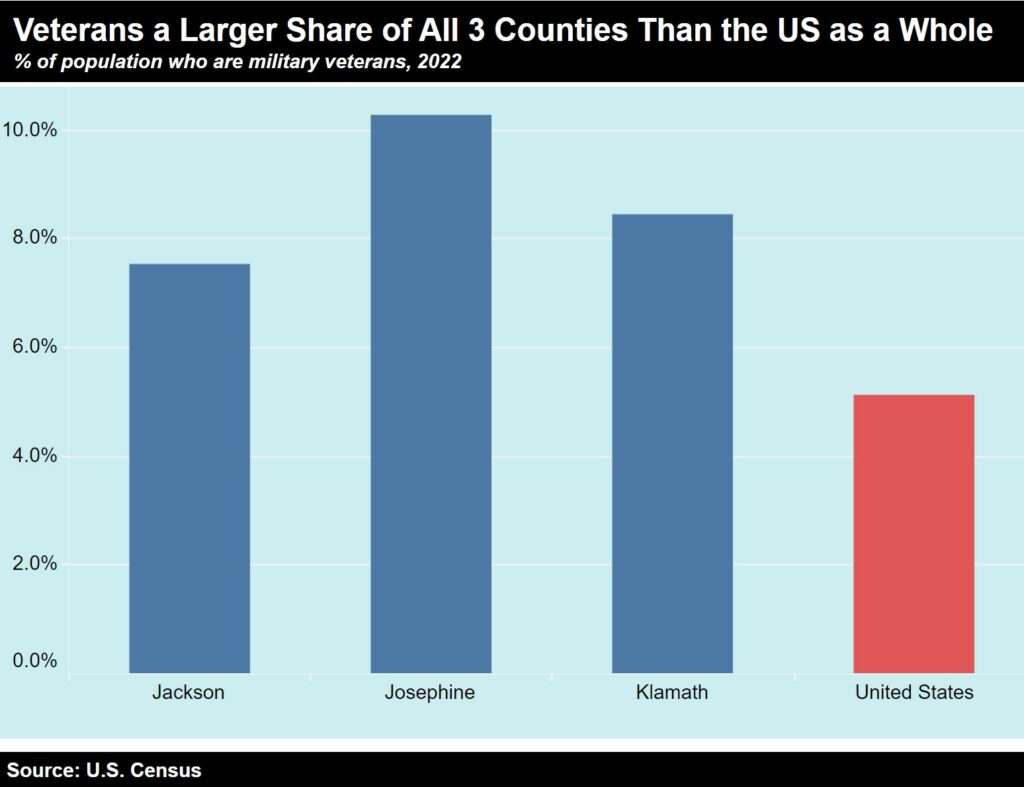The USPS Network Consolidation Plan: What’s at Stake for Southern Oregon, Save the Post Office, Steve Hutkins In 2023, two years into the 10-year plan, USPS reported that the agency had committed .6 billion out of a total billion restructuring budget and plans were on track to open 60 new Regional Processing and Distribution Centers across the country in the coming years. Through this consolidation plan, many postal processing and distribution facilities in smaller communities will be converted to Local Processing Centers with reduced functions. USPS has not yet disclosed a full list of facilities to be affected by the plan. But in numerous reported cases, consolidation will result in packages and mail traveling long distances from
Topics:
Angry Bear considers the following as important: Hot Topics, politics, Save The Post Office, US EConomics
This could be interesting, too:
Robert Skidelsky writes Lord Skidelsky to ask His Majesty’s Government what is their policy with regard to the Ukraine war following the new policy of the government of the United States of America.
NewDealdemocrat writes JOLTS revisions from Yesterday’s Report
Joel Eissenberg writes No Invading Allies Act
Ken Melvin writes A Developed Taste
The USPS Network Consolidation Plan: What’s at Stake for Southern Oregon, Save the Post Office, Steve Hutkins
In 2023, two years into the 10-year plan, USPS reported that the agency had committed $7.6 billion out of a total $40 billion restructuring budget and plans were on track to open 60 new Regional Processing and Distribution Centers across the country in the coming years.
Through this consolidation plan, many postal processing and distribution facilities in smaller communities will be converted to Local Processing Centers with reduced functions. USPS has not yet disclosed a full list of facilities to be affected by the plan. But in numerous reported cases, consolidation will result in packages and mail traveling long distances from outlying areas to urban regional processing centers.
Steve Hutkins presents an example of how the USPS consolidation plan affects smaller towns and rural communities, where residents tend to rely most heavily on the public Postal Service? Unfortunately, USPS has published very little analysis to back up their claims about the expected benefits of the consolidation plan. The following report uses available information to examine the potential impacts on just one facility: a postal processing and distribution center in Medford, Oregon.
The USPS Network Consolidation Plan: What’s at Stake for Southern Oregon – Inequality.org, Scott Klinger Sarah Anderson.
A core feature of U.S. Postmaster General Louis DeJoy’s 10-year plan, “Delivering for America,” is an initiative to restructure the nation’s postal network by consolidating processing and distribution operations in regional centers. The consolidation mostly occurs in urban areas.
In 2023, two years into the 10-year plan, USPS reported that the agency had committed $7.6 billion out of a total $40 billion restructuring budget and plans were on track to open 60 new Regional Processing and Distribution Centers across the country in the coming years.
Through this consolidation plan, many postal processing and distribution facilities in smaller communities will be converted to Local Processing Centers with reduced functions. USPS has not yet disclosed a full list of facilities to be affected by the plan. But in numerous reported cases, consolidation will result in packages and mail traveling long distances from outlying areas to urban regional processing centers.
How might this consolidation plan affect smaller towns and rural communities, where residents tend to rely most heavily on the public Postal Service? Unfortunately, USPS has published very little analysis to back up their claims about the expected benefits of the consolidation plan. This report uses available information to examine the potential impacts on just one facility: a postal processing and distribution center in Medford, Oregon.
USPS plan for the Medford, Oregon processing facility
Medford, a town of about 86,000 people, is the county seat of Jackson County. The town’s existing processing facility also serves nearby Klamath and Josephine counties. In 2023, the facility employed more than 80 people and processed nearly 250 million letters, 28 million flat rate envelopes, and 11 million packages.
USPS management approved a plan in August 2023 to convert the Medford facility to a Local Processing Center and reduce its functions to “destinating operations” (i.e., sorting and preparing mail for local delivery). Package processing and “originating operations” (i.e., canceling and sorting locally generated mail) – and equipment to perform these functions – would be transferred to a new regional center in the city of Portland, 280 miles away.
The approval of this plan followed a brief public consultation process that many viewed as cursory. As Rep. Cliff Bentz pointed out in a letter to DeJoy, the signatures approving the plan are dated the same day as the deadline for local residents to submit comments about the proposed restructuring plan. The hasty consultation process left many questions and concerns about the plan unanswered.
Potential slower delivery times
Under the USPS plan for the Medford facility, mail and packages posted by local residents and business will travel to Portland for processing – even if the destination address is in the local tri-county area. The state of Oregon has just one major artery going north-south, Interstate highway 5. In normal conditions, the 280-mile route between Medford, which is near the California border, and the Portland regional distribution and processing center site at the northern edge of the state takes about 4 hours and 28 minutes, or 9 hours round-trip.
A First Class letter shipped from Klamath Falls in Oregon to Sacramento, California would today travel 387 miles and take 6 hours. Under the consolidation plan, that letter, passing through Portland, rather than Medford, would travel twice as many miles, and take twice as long to make the journey – 858 miles and 13 hours of travel time.
The potential for delays related to mail and packages having to travel so far for processing is of particular concern for residents sending or receiving time-sensitive materials, such as bill payments, medicine, and election ballots. According to the USPS official review of the Medford consolidation, the facility will lose both of its AFCS-200 machines, used for automatically canceling and postmarking mail. This raises capacity questions regarding the timely handling of election ballots that need to be time-stamped by a certain deadline, especially since Oregon conducts all elections by mail instead of through traditional polling places.
USPS insists these changes will not affect delivery services for residents or businesses. In fact, they claim there will be no service performance downgrades for any of the origin-destination zip code pairs handled by the facility and in many cases there will be upgrades.
However, USPS has provided scant information to back up these claims. Absent more detailed analysis, it’s simply hard to believe they will be able to avoid delays when mail and packages from residents in southern Oregon must travel 280 miles north before they are returned for processing for local delivery – or for delivery to destinations in California or other locations to the south or east of Medford.
Source: USPS Notices of Intent published January 10, 2024
Risk of transportation disruptions
Beyond the normal travel times between Medford and the Portland regional processing center, the consolidation plan exposes the delivery network to serious potential disruptions on this travel route.
According to the Oregon Department of Transportation’s most recent data, 2,863 crashes occurred on I-5 in 2021. Of these, 33 involved fatalities and nearly 1,000 others involved moderate to serious injuries. One survey ranked I-5 in Oregon among the nation’s 100 “most loathed” highways, due to frequent back-ups.
Transportation disruptions due to climate change are also a very real – and growing – concern on this route. According to the Oregon Department of Transportation, “Climate change is leading to more frequent and extreme weather events in Oregon, making the transportation system and the traveling public more vulnerable to natural hazards like wildfire, landslides, flooding, extreme heat, winter storms, coastal erosion, and others.” Examples:
- During the September 2020 wildfires that burned more than 1 million acres in the state I-5 was closed for multiple miles.
- In 2019, a 12,000-acre fire near Canyonville, 70 miles north of Medford, caused delays and closures as firefighters removed hazardous trees next to I-5.
- Vegetation fires brought traffic on I-5 north of Salem to a crawl in July 2023, snarling traffic in both directions for hours.
Oregon is also vulnerable to seismic activity. And while I-5, an inland transportation route, is more likely to withstand a megaquake than coastal highways, such a disaster would presumably have a severe effect on this major artery’s traffic as travelers seek alternative routes.
Conversion of the Medford facility to a Local Processing Center would make the region less resilient in the face of crises of all sorts. If disasters, storms, or power outages hit transportation routes to Portland – or the Portland regional processing center itself – the area would be without a mail processing back-up for canceling and entering mail and packages into the mail flow.
USPS collection schedule changes could further delay deliveries
In its official review of the Medford facility, USPS management estimates that conversion of this facility to a Local Processing Center will save $3.7 million to $4.9 million annually in transportation costs due to “modifying and eliminating” existing highway contract routes and postal vehicle service routes “as necessary.”
The document does not elaborate on these planned modifications. But the expected savings could be related to Postmaster DeJoy’s plan to cut transportation costs nationwide through changes to collection practices. Currently, trucks pick up mail and packages from processing centers for drop off early in the morning at post offices, where letter carriers then pick it up for delivery. In the evening, the process is reversed, with trucks collecting outgoing mail from post offices for transport back to processing centers.
DeJoy’s “Optimized Collections” initiative (more recently rebranded as the “Local Transportation Optimization” initiative) aims to eliminate evening collection in many locations. Instead, mail and packages will be left sitting at the post office until the following morning, when trucks will collect it at the same time as they are dropping off mail from the processing center.
USPS first introduced this cost-cutting initiative in Richmond, Virginia in late October of 2023 and is now expanding it in Wisconsin. They have not released a list of affected communities or a timeline associated with the initiative, but the clear aim is to eliminate evening collection at thousands of post offices.
The post offices to be targeted for this change are those located more than 50 miles from a processing center, since these distances create higher truck transportation costs. Most of these more remote post offices will obviously be in rural areas, raising strong questions about potential discrimination by a public agency against rural communities.
In response to questions from the Postal Regulatory Commission, USPS management denied that the loss of evening collections will have any “material effects” on the delivery of First Class mail. Unfortunately, it is too early to assess the impact of the first experiment in the Richmond area. However, it’s hard to believe that if the mail spends a day sitting in a post office before going out to a processing center that delivery times won’t be extended at least a day.
If “optimized collection” is introduced in the Medford area, it could compound potential delays related to the consolidation plan and other ongoing challenges with on-time delivery. In one of DeJoy’s first reforms under his 10-year plan, he introduced new service standards in October 2021 that lowered the bar for achieving delivery performance targets. Specifically, USPS lengthened the delivery standard for about 40 percent of First-Class Mail (particularly pieces traveling longer distances) to be 1-2 days longer than the previous standard. Even under these relaxed standards, mail from the Oregon-Montana-Idaho postal district to New York City and Washington, DC arrived late more than 20 percent of the time during the first quarter of fiscal year 2024, which ended on December 31.
Residents who stand to be most affected by potential delivery slowdowns and disruptions
The tri-county area currently served by the Medford processing facility is home to nearly 400,000 people, with disproportionately large numbers of rural residents, seniors, veterans, and people without broadband access – all groups who tend to rely particularly heavily on the public Postal Service and therefore have the greatest cause for concern about potential slowdowns and disruptions.
Rural residents
According to 2020 U.S. Census data, all three counties currently served by the Medford facility have a larger share of rural residents than the nation as a whole. Rural residents make up 43 percent of Klamath County’s population, 38 percent of Josephine’s, and 21 percent of Jackson’s, compared to less than 18 percent of the total U.S. population. Rural residents have the greatest stake in maintaining a strong public Postal Service. Unlike private carriers, USPS has a universal service obligation that requires them to deliver to all Americans, no matter where they live, and USPS does not charge extra for deliveries to remote zip codes.
Seniors
The three affected counties each have a larger share of seniors than the U.S. population as a whole. This is a group that tends to rely more heavily than other Americans on USPS for medicine, bill paying, communications with loved ones, and other services. These three counties combined are home to 91,251 people 65 years old and older, according to Census data.
Veterans
The Veterans Administration operates a “Consolidated Mail Outpatient Pharmacy” that process over 130 million prescriptions per year, most of which are delivered to veterans by USPS. Rural veterans are likely to rely most heavily on USPS for these deliveries, since they are more likely to live long distances from VA medical facilities that dispense pharmaceuticals.
USPS has also long been an important source of good jobs for veterans, who receive special preferences in hiring for postal positions. Nationwide, at least 100,000 veterans are part of the postal workforce. At the Medford USPS processing and distribution facility, 8 out of 84 employees are veterans. At post offices in the surrounding area, 22 of 190 customer service employees are veterans.
In each of the three Oregon counties that would be affected by the consolidation, veterans make up a larger share of the population than in the country as a whole. The share of Josephine County residents who are military veterans is 10.3 percent — more than double their share in the national population. The total number of veterans in these three counties: 31,602.
Residents without broadband
Americans without access to high-speed internet are more likely to rely on USPS for bill paying and other communications. In each of the three Oregon counties that would be affected by the consolidation, a larger share of local residents lack access to high-speed broadband than in the country as a whole. In Klamath County, an estimated 24.5 percent of residents (17,202 people) lack access to internet services of 100 Mbps or higher, the level the FCC has indicated is the minimum to be considered high-speed broadband. In all three countries combined, an estimated total of 58,515 people lack this access.
Conclusion
A number of local groups and individuals, including U.S. senators and representatives who represent the Medford area, have registered concerns with USPS about the proposed restructuring changes, particularly the impact on delivery speeds and reliability.
To date, postal management has responded with very little detailed analysis to back up their claims that centralizing processing capacity in urban hubs will actually improve service. Before moving ahead with this plan, it would be reasonable to expect USPS to provide more detailed information on:
- Delivery times for mail and packages between residents and businesses currently served by the Medford processing and distribution center. With mail and packages traveling a nine-hour trip to Portland for processing, how can you explain your claim that delivery times will be unaffected?
- Preparation for climate change-related disasters and other emergencies. With transportation between Medford and Portland relying on one major interstate highway, how can you explain your claim that the consolidation plan will improve Postal Service reliability? What are USPS plans to provide back-up capacity in the event of disruptions?
- Projected transportation cost savings resulting from the Medford facility conversion. More explanation is needed to justify the claim that a reform which will lead to mail and packages traveling longer distances to the regional processing center will save money on transportation costs.
- Environmental impacts of consolidation. Delivering for America cites a goal of positioning USPS as the “Greenest Way to Mail and Ship.” What will be the environmental impacts of mail and packages from the Medford area having to travel 280 miles north to Portland, even if they are destined for addresses in the Medford area or locations in the opposite direction as Portland? USPS sustainability goals should address greenhouse gas emissions from contracted trucking services as well as their own delivery fleet.
USPS should make detailed analyses of these issues available to the public and provide stakeholders the chance for a more meaningful consultation process regarding changes to the Medford processing and distribution center and similar facilities.
Some Background:
Sarah Anderson directs the Global Economy Project at the Institute for Policy Studies, an independent, nonpartisan think tank founded in 1963. Scott Klinger is an IPS Associate Fellow. Additional Institute for Policy Studies research on the Postal Service.




